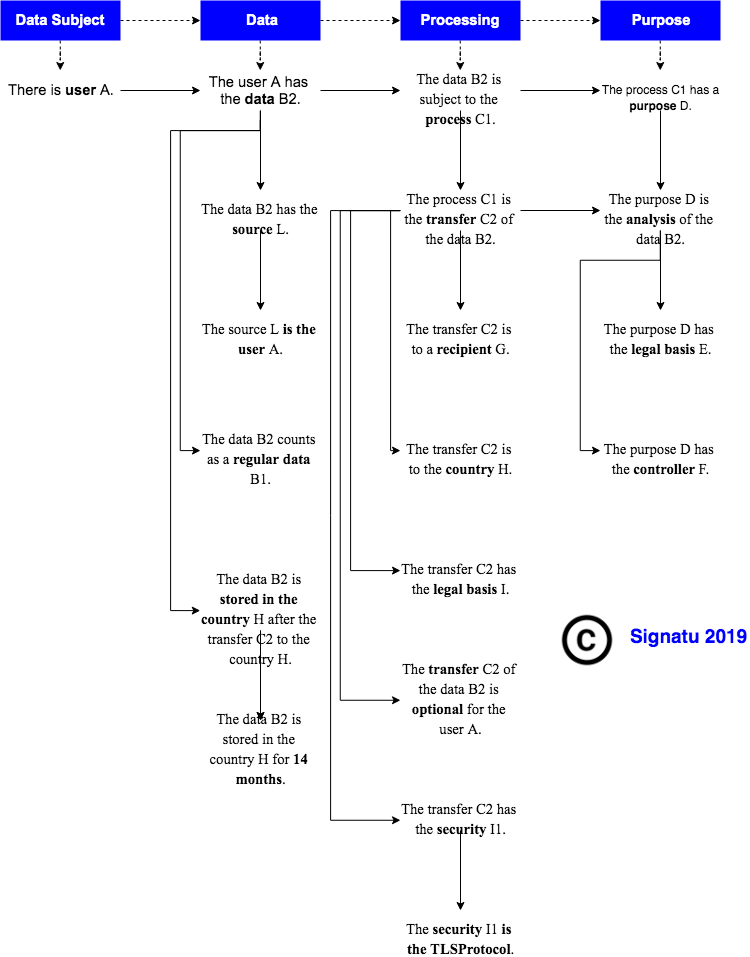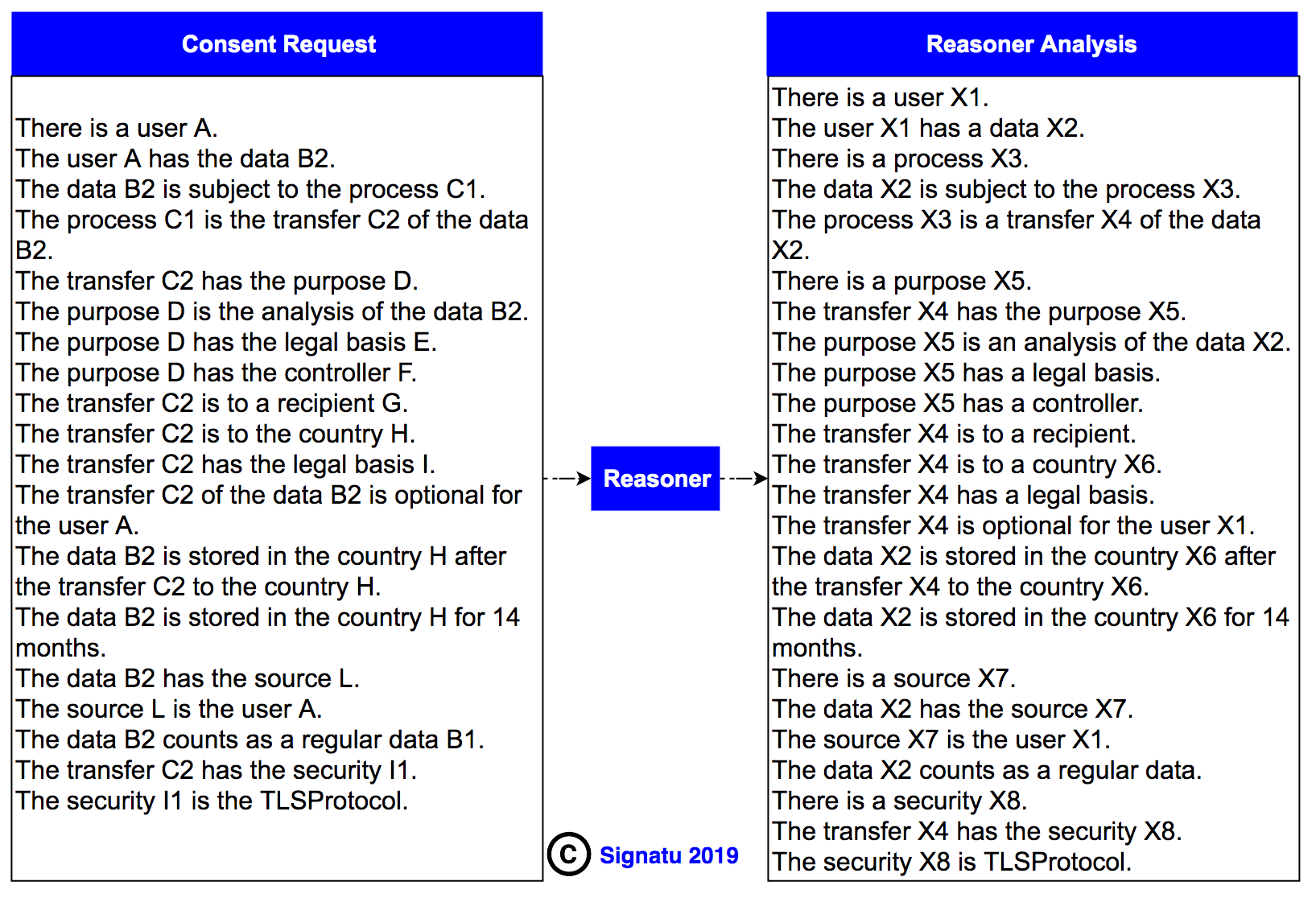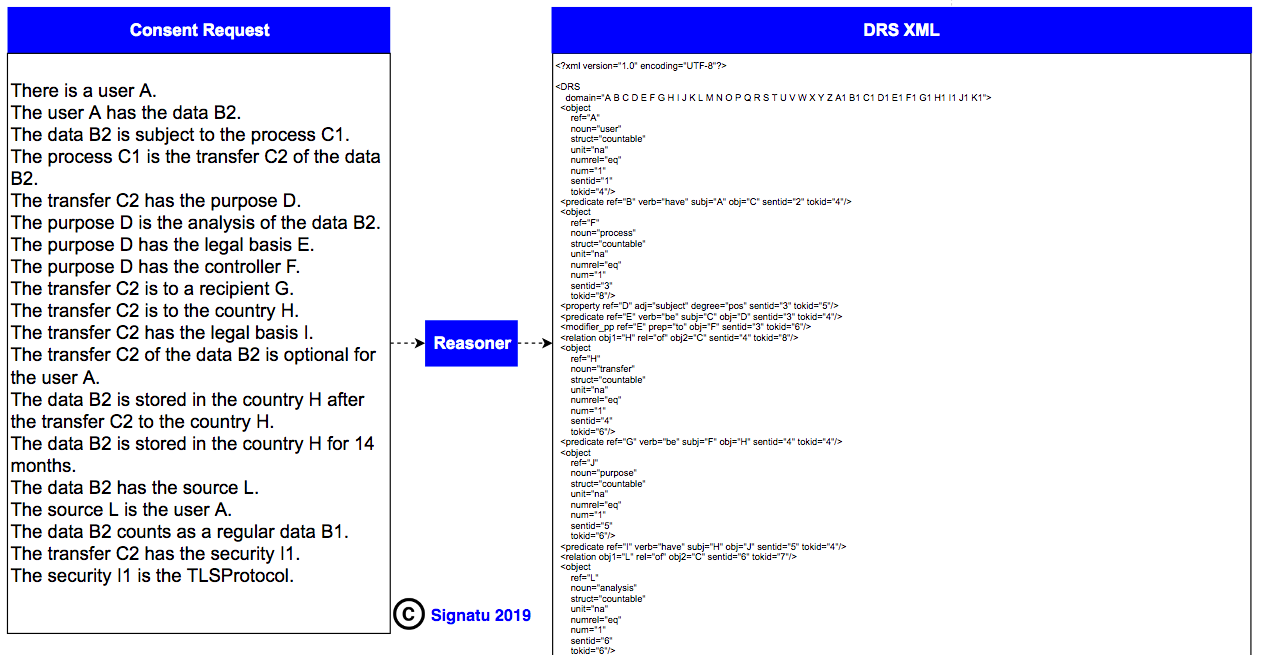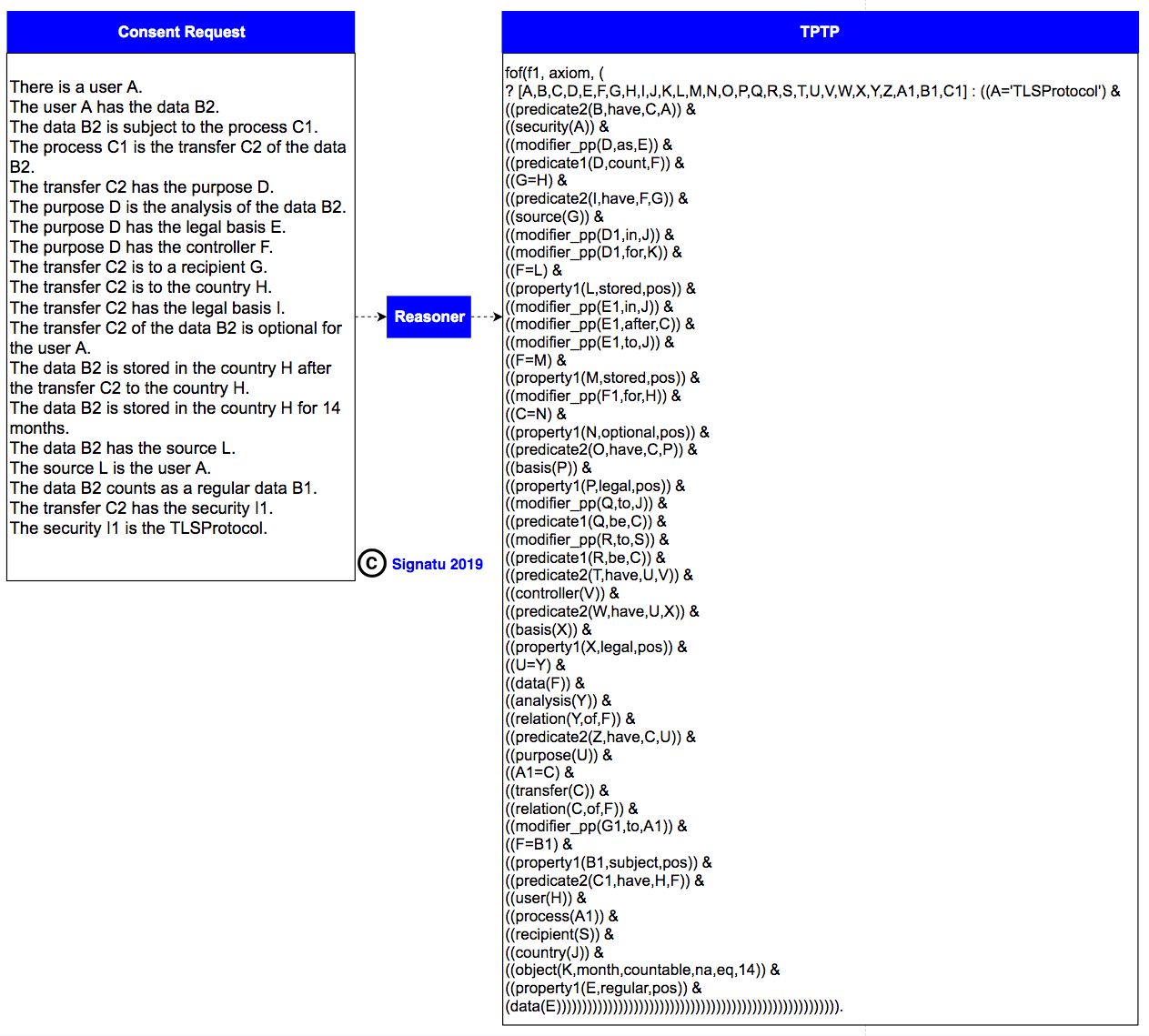Is it possible that controllers and end users can request and give consent machine-to-machine (M-2-M) via e-agents?
Today, no such technology exists, but soon it will !

Can controllers inform of personal data handling and request end user consent:
- human-to-human (H-2-H)?
- machine-to-human (M-2-H)?
- machine-to-machine (M-2-M)?
Can end users give and controllers receive end user consent:
- human-to-human (H-2-H)?
- human-to-machine (H-2-M)?
- machine-to-machine (M-2-M)?
The answers to these questions will be explored in this blog post.
Human and machine readable
Watch this space for more!
AI consent reasoning
In order for e-agents to make consent decisions on behalf of end users, end users’ e-agents must have the capacity to reason.
Could an e-agent reason about the following consent request from the controller?
There is a user A. The user A has the data B2. The data B2 is subject to the process C1. The process C1 is the transfer C2 of the data B2. The transfer C2 has the purpose D. The purpose D is the analysis of the data B2. The purpose D has the legal basis E. The purpose D has the controller F. The transfer C2 is to a recipient G. The transfer C2 is to the country H. The transfer C2 has the legal basis I. The transfer C2 of the data B2 is optional for the user A. The data B2 is stored in the country H after the transfer C2 to the country H. The data B2 is stored in the country H for 14 months. The data B2 has the source L. The source L is the user A. The data B2 counts as a regular data B1. The transfer C2 has the security I1. The security I1 is the TLSProtocol.
This consent request is illustrated in this flow chart:

When we apply the AI reasoner on this consent request, we get the following paraphrase:

The consent request above (to the left) is written in a logic-based knowledge representation language.
Via a parser, the text can be translated into a discourse representation structure (DRS):

Via a parser, the text can be translated into an XML discourse representation structure (DRS XML):

The DRS is expressed in the standard and the clausal forms of first-order logic.
The DRS is also translated into other logic languages, e.g. the TPTP4 notation:

The DRS can, with some syntactic restrictions, also translated into the semantic web languages OWL and SWRL5.
This allows the use of existing reasoning tools to reason about the consent request, e.g.:
- to show its (in-)consistency.
- to deduce a text from another text.
- to answer queries from such a text.
AI consent decision making
Watch this space for more!
